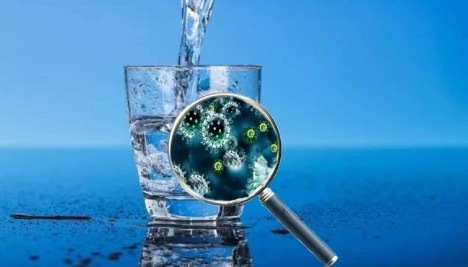Well water often contains various minerals and elements, among which iron and manganese occupy a special place. Manganese in well water can be dangerous due to its effect on the color, taste and safety of the water. Although these elements do not pose a serious threat in small quantities, their excess can lead to a number of problems both for human health and for the condition of plumbing systems.

Potential risks of high levels of manganese and iron:
- The water may acquire an unpleasant metallic taste and turn rusty brown.
- The accumulation of deposits in pipes, which leads to their clogging and deterioration of plumbing performance.
- May have a negative impact on human health, especially with long-term use.
The content of the article
- Standards for iron content in drinking water
- Acceptable levels of metals
- Methods of water control and purification
- How to test the water yourself
- conclusions
Standards for iron content in drinking water
Setting standards for the amount of iron in drinking water is critical to maintaining water quality and safety. There are varying limits for iron levels around the world, with the generally accepted limit hovering around 0.3 mg/l. Exceeding this threshold can affect the taste of the water, change its color and provoke the growth of bacteria.
In the Russian context, standards for iron content in drinking water are determined on the basis of approved sanitary standards and regulations. According to these standards, the upper limit of iron content is set at 0.3 mg/l, which is in line with international recommendations for ensuring the safety of water for consumption.
Maintaining this level of iron not only prevents changes in the organoleptic properties of water, but also plays a role in important role in preventing health problems that may arise from excessive consumption of this metal In addition, high iron content in water can cause deposits to form in systems. water supply and household appliances, which will require additional efforts for their cleaning and technical service.

Acceptable levels of metals
When assessing the quality of drinking water, one of the key aspects is the content of certain metals, in particular manganese and iron. These elements are naturally present in certain quantities in water, but their excess can negatively affect both human health and the quality of water in general.
Iron is a trace element necessary for the normal functioning of the human body. However, in high concentrations it can cause a number of problems. The permissible iron content in drinking water is usually set at a level of up to 0.3 mg/l. This value is considered safe and will not cause changes in taste, color of water or formation of deposits in water supplies.
Manganese, also present in water, in high concentrations can lead to changes in the color of the water and its taste. In addition, manganese in excess amounts is potentially harmful to health. The permissible level of manganese in drinking water is set at a level of up to 0.1 mg/l. If this indicator is exceeded, it is necessary to take measures for water purification and treatment.
These standards are set taking into account the need to maintain a balance between health requirements and the provision of a quality water supply. Regular monitoring of metal levels in water and the use of effective treatment systems will help maintain these indicators are within acceptable standards, guaranteeing the safety and quality of water for daily use.
Methods of water control and purification
To maintain the quality of water from a well at the proper level, it is necessary to regularly analyze it for iron and manganese content. If the standards are exceeded, measures should be taken to purify and treat the water. There are various purification methods including filtration, aeration and chemical treatment. The right treatment system will not only improve water quality, but also prevent potential risks to health and infrastructure.
How to test the water yourself
In order to independently assess the quality of water from a well, there are several simple but effective methods. These methods make it possible to identify key indicators of water quality, including the presence of manganese, iron and other important elements.
The first step is to visually check the water. Pay attention to color, transparency and presence of foreign particles. Cloudy or unusually colored water may indicate that iron and manganese levels are above acceptable levels.
The next step is to use specialized test strips, which are available at home and garden stores. These strips allow you to determine levels of elements such as iron and manganese, as well as other important indicators including pH and water hardness. Instructions for use are usually simple and clear, making this method accessible to everyone.
For more accurate diagnostics, you can use electronic water quality testers. These devices offer more accurate and detailed data on the composition of water. Although they are more expensive compared to test strips, they provide a more in-depth analysis of water quality.
Conducting regular self-tests will help you identify changes in water quality early and take appropriate measures to purify or treat it. This will ensure the safety and comfort of using water from a well for all domestic needs.
conclusions
To summarize, it can be argued that the presence of manganese and iron in well water is an important aspect that requires attention. Although both elements are essential components of water, their concentrations must be strictly controlled. In Russia, the established standards for iron content in drinking water - up to 0.3 mg/l for iron and up to 0.1 mg/l for manganese - are aimed at maintaining the safety and quality of water.
Exceeding these standards can not only deteriorate the taste and color characteristics of the water, but also contribute to the occurrence of health problems and technical malfunctions. Regular monitoring of these metals, as well as the use of effective water treatment methods, are key measures to ensure a safe and high-quality water supply from wells.


